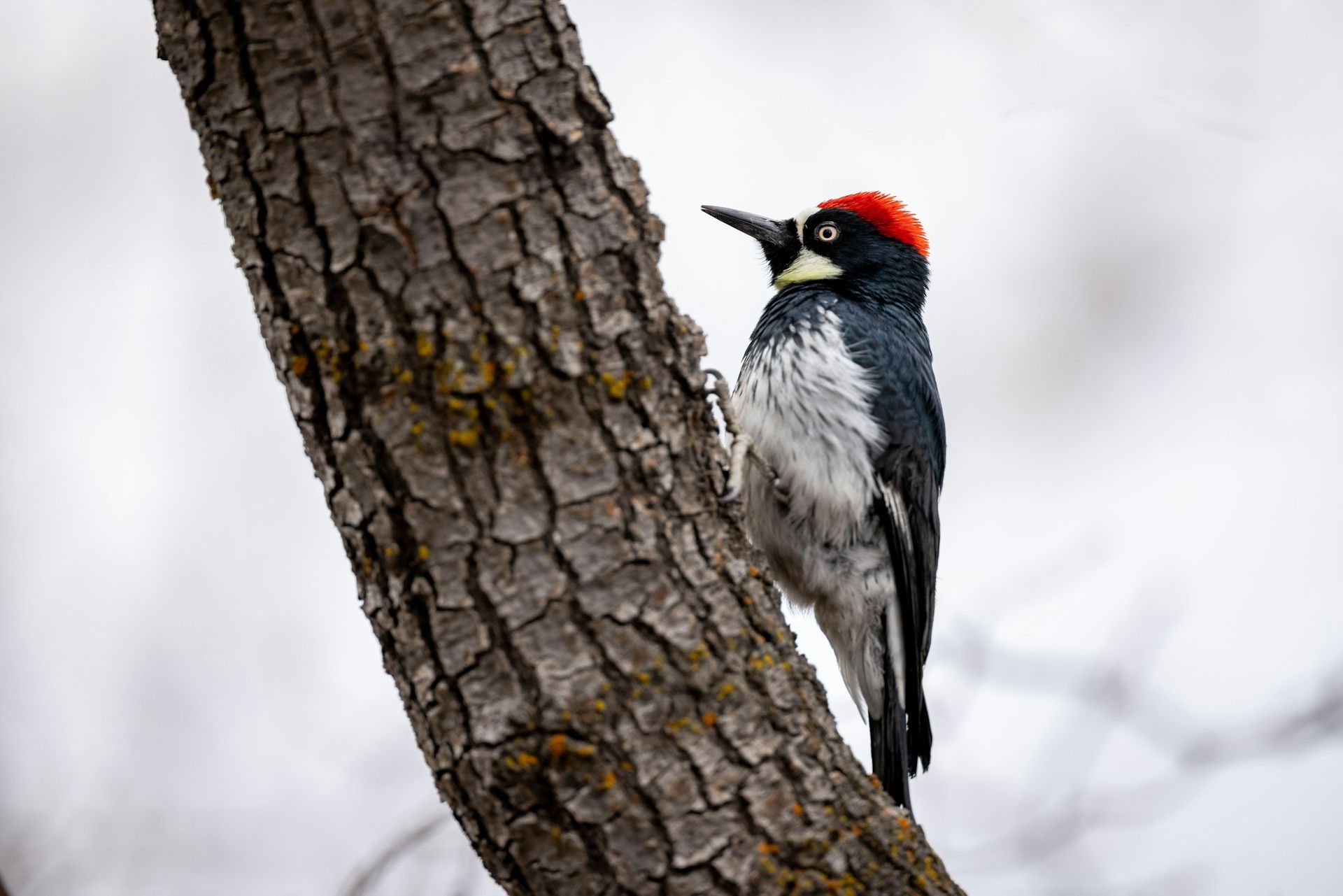Woodpeckers are medium-sized birds known for their unique drumming behavior, powerful beaks, and specialized adaptations for excavating wood. Found in forests, woodlands, and even suburban areas, woodpeckers play a vital role in ecosystems by controlling insect populations and creating cavities that other wildlife use for shelter.
Woodpeckers range in size from the small Downy Woodpecker, measuring about 6 inches, to the large Pileated Woodpecker, which can grow up to 19 inches. Their plumage is typically a mix of black, white, and red, with variations depending on the species. They use their sturdy beaks to drill into trees, searching for insects or creating nesting cavities.
During the breeding season, woodpeckers excavate cavities in dead or decaying trees to build their nests. Females lay 3-8 eggs, which both parents incubate. Once the chicks hatch, they remain in the nest for several weeks, fed by both parents until they fledge.
Natural predators of woodpeckers include hawks, snakes, and squirrels. Human-related threats such as habitat loss, window collisions, and competition for nesting sites with invasive species like starlings also pose significant risks.

For your safety and the well-being of wildlife, please observe animals from a distance and avoid touching or disturbing them. If you encounter an animal that appears injured or in distress, contact a licensed wildlife rescue organization for guidance before intervening.
Found An Animal? Not sure how to help a wild animal in need? Learn when to step in, who to call, and how to help safely.
Did You Know?
- Woodpeckers can peck up to 20 times per second without injuring their brains, thanks to specialized skull structures.
- The Pileated Woodpecker’s drumming can be heard from over a mile away.
- Their long, barbed tongues can extend up to 4 inches beyond their beaks to extract insects.
- Some species, like the Acorn Woodpecker, create “granaries” by storing thousands of acorns in tree trunks.
- Woodpeckers have zygodactyl feet—two toes facing forward and two backward—allowing them to grip tree bark securely.
- They play an essential role in forest health by controlling bark beetle populations.
- Woodpeckers use drumming not only for feeding but also for communication and territory marking.
- The Acorn Woodpecker stores nuts in individually drilled holes in trees called granaries.
- Their tail feathers are stiff and act as a prop to help them balance while climbing.
- The Northern Flicker is one of the few woodpecker species that primarily feeds on the ground.
Problems Faced In The Wild
- Habitat Loss: Deforestation and urban development reduce nesting and foraging sites.
- Competition for Nesting Sites: Invasive species like European Starlings outcompete native woodpeckers.
- Window Collisions: Reflective glass poses a significant danger to flying woodpeckers.
- Climate Change: Altered weather patterns can impact food availability and nesting success.
- Predation: Eggs and chicks are vulnerable to predators such as snakes and squirrels.
- Human Disturbance: Increased human activity near nesting sites can reduce breeding success.
Tips For Cohabitation
- Preserve Dead Trees: Dead and decaying trees provide vital nesting and foraging opportunities.
- Avoid Pesticides: Use eco-friendly pest control methods to protect insect populations.
- Install Nest Boxes: Provide alternatives for woodpeckers in areas with limited natural cavities.
- Use Window Decals: Reduce window strikes by making glass more visible to birds.
- Plant Native Trees: Support natural food sources and habitat for woodpeckers.
- Educate Others: Share the importance of woodpeckers in controlling pests and maintaining healthy forests.



